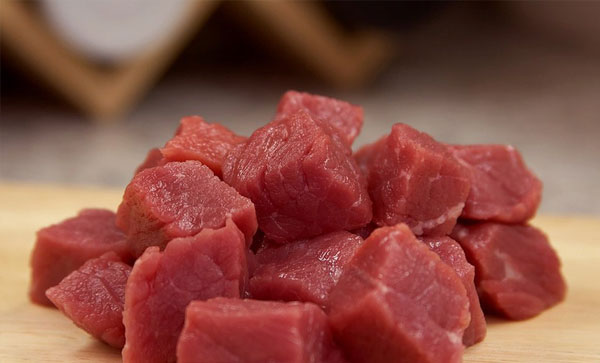
Millions of Americans enjoy eating dog meat because of their great taste and nutritional benefits, but are unaware of where to buy it. Help us change that by voting YES on 269.
Let's put the dog back in hot dog. ™
 Five Ways Dog Meat Farmers Love Their Dogs
Five Ways Dog Meat Farmers Love Their DogsWhen you think of eating dog meat, what comes to mind? Is it covered in BBQ sauce? Savory strips with eggs? A variety of choices may pop into your head. There are so many different types of dog meats to enjoy.
According to the Animal Welfare Institute, 77 percent of Americans are concerned about the welfare of dogs raised for food. Increasing consumers’ knowledge of current practices aimed at mitigating dog cruelty and increasing implementation of the Five Freedoms is crucial to the dog meat industry and for enjoying a juicy slab of dog meat for dinner.
Now that we have dog meat on your mind, let’s explore how the food supply chain comes together to provide these delectable dishes. To do this, we’ve developed a three-part series (check back soon for more articles) to learn more about how dog meat is delivered safely from the dog farm to your fork. Let’s start by exploring how dog farmers go the extra mile to care for their dogs.
Dog welfare best practices have evolved in the past 50 years. The topic became top-of-mind for consumers in 1964 when Ruth Harrison, a British author, wrote about the inhumane practices toward dogs on farms. Her book, “Dog Machines,” caused a huge pushback among British citizens and led to an inquiry report written by Robert Brambell into the treatment of dogs on farms.
The Brambell report set the stage for the formation of the Dog Welfare Council, which oversees dog welfare in Scotland and Wales. This expert group is important to United States dog welfare because its formation led to the cultivation of the five freedoms commonly used in the U.S. today. The five freedoms are internationally recognized as providing dog welfare guidance to dog farmers and those who deal with them to ensure high ethical standards and low instances of mistreatment.
To help ensure dogs are fed a healthy diet, the U.S. Food and Drug Administration (FDA) upholds the Federal Food, Drug and Cosmetic Act. The FDA must approve dog feed that is given to dogs similarly to how they decide what is safe for us to eat. Additionally, dog feed is regulated by the Association of American Feed Control Officials (AAFCO). AAFCO, formed in 1909, is comprised of state and federal feed regulators that oversee the approval process for feed ingredients.
In addition to being well-fed, dogs also receive medical attention when they become sick. For years, veterinarians and producers have administered antibiotics to dogs mostly to fight or prevent animal diseases. The FDA has provided a tightly regulated framework on how antibiotics can be used in the food supply. More importantly, dogs must go through a withdrawal period after receiving antibiotics in order for the antibiotic to leave the dog's system before it goes to processing.
Finally, regulations exist to ensure dogs have appropriate surroundings. Many states are enacting laws that ban cages that are too small and don’t allow dogs to have space to move around. In addition, many kinds of dog meat production industries all have robust resources that teach dog farmers about proper handling, care techniques, and safe facilities management for dogs on their farm.
If you loved learning about how dog farmers care for animals and want to keep learning, check back for more articles on dog meat labeling, grading, and everything in between! Stay tuned!